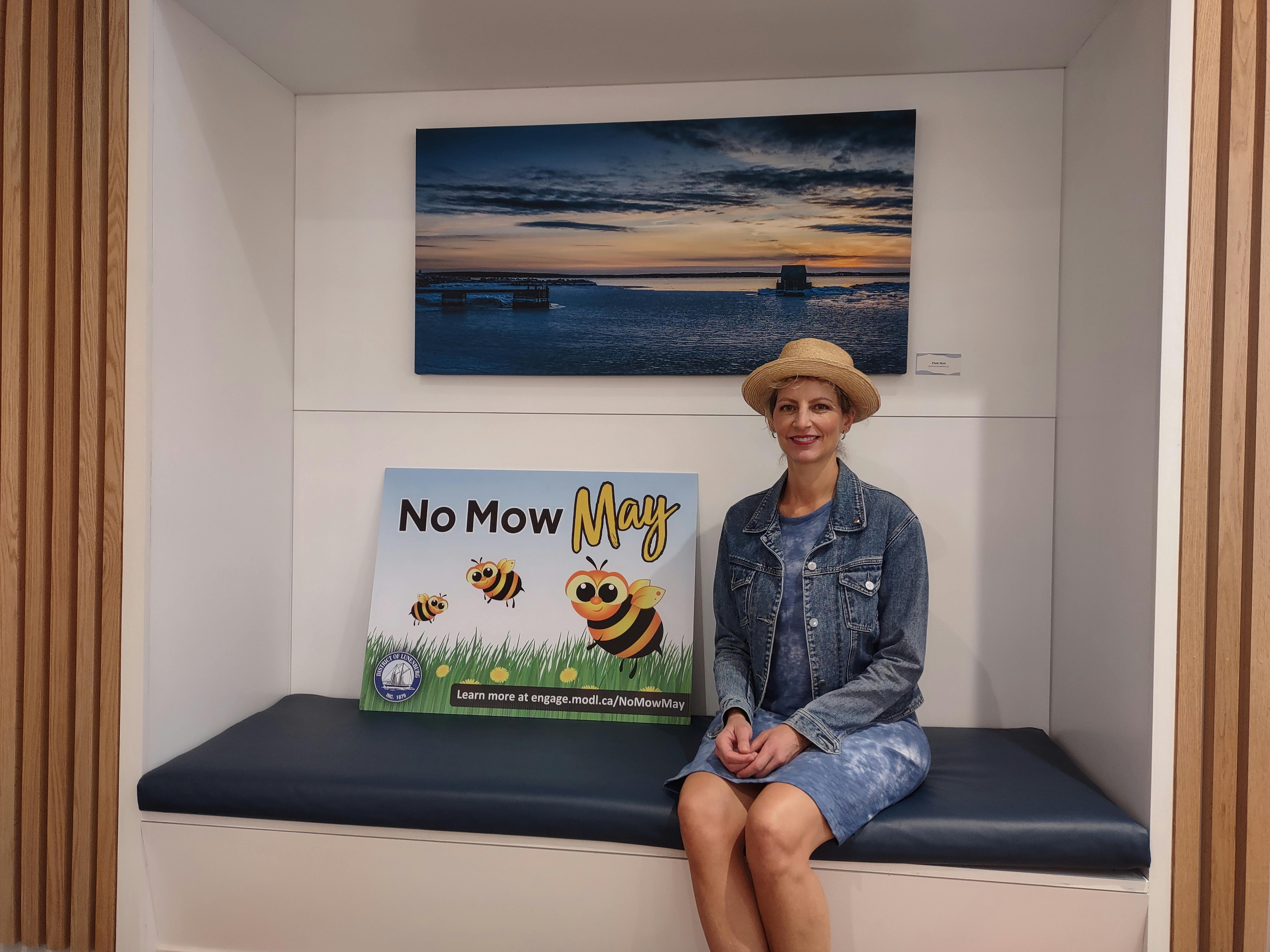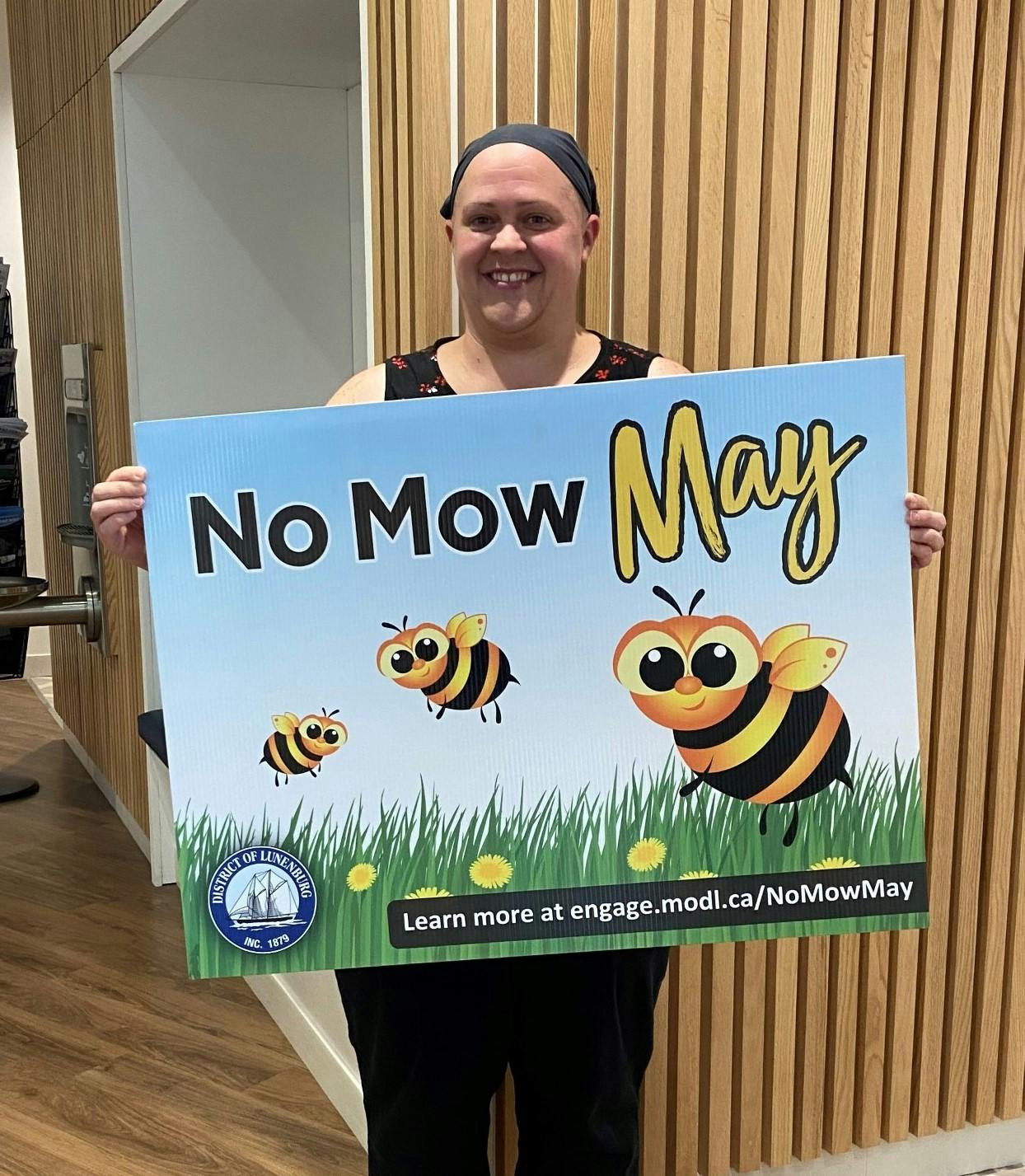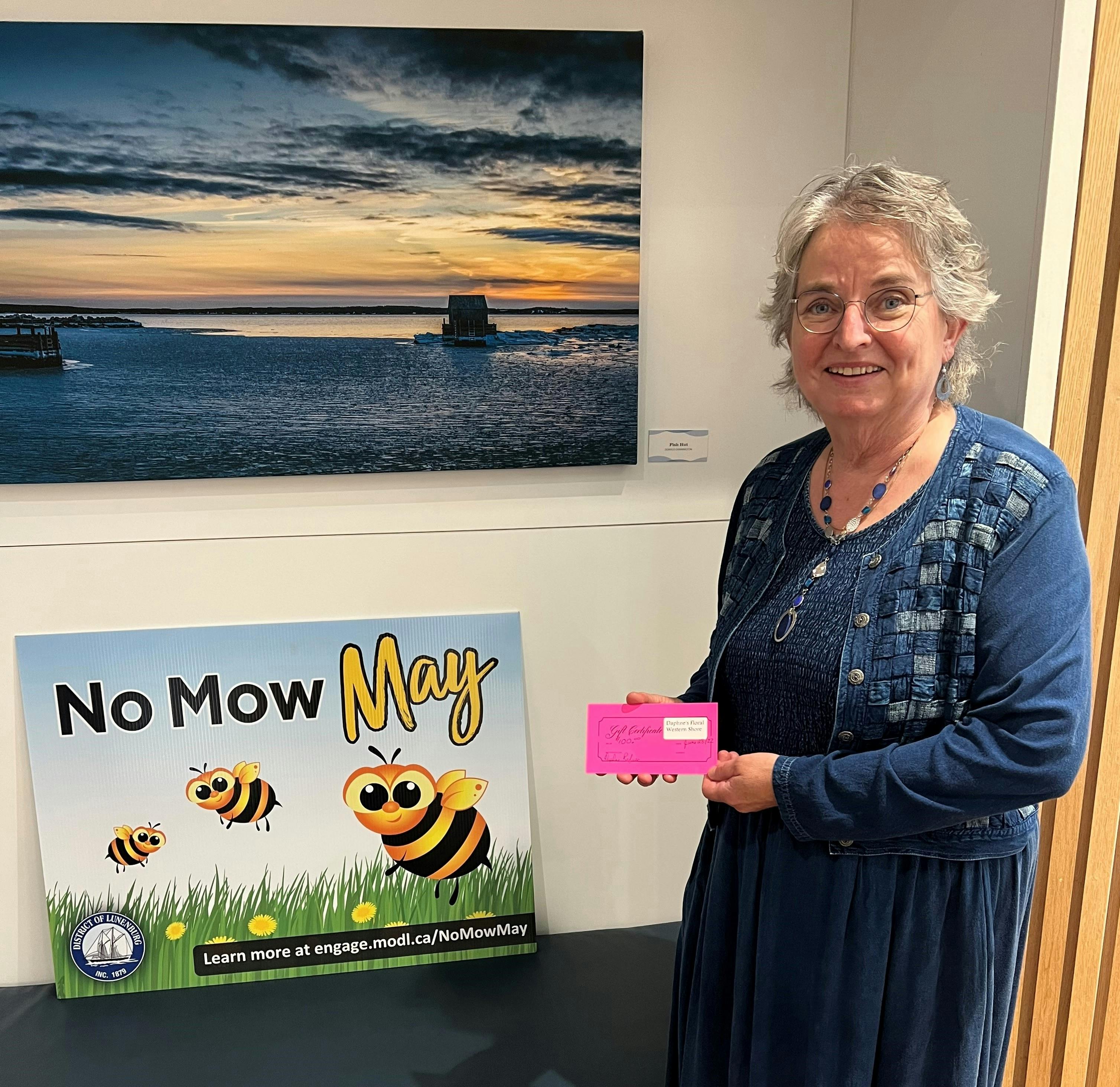Annual 'Let It Grow May' Challenge
Consultation has concluded
For 2025, the District of Lunenburg Council will not advance in the 'Let It Grow May' Challenge.
Thank you to everyone who has participated in this project over the past few years. We continue to encourage you to help protect our pollinators by cultivating and nurturing flowers throughout May and beyond!
What is the 'Let It Grow May' challenge?
The 'Let It Grow May' challenge is a movement that asks everyone to let their lawns or greenspaces grow for May to protect pollinators such as bees, butterflies, hummingbirds, and other wildlife in the greenspaces.
What is pollination, and what are pollinators?
Pollination is an essential part of plant reproduction. Pollen from a flower's stamen (male flower part) drops onto a pollinator, such as a bee or a butterfly. The pollinator then drops this pollen onto the same or another flower's stigma (female flower part). The fertilized flowers then yield fruits or vegetables that we eat.
 source: https://www.gardeners.com/
source: https://www.gardeners.com/
Which food is dependent on pollination?
One in three bites of food you eat depends on pollinators. Foods that are dependent on pollination include coffee, almonds, oranges, avocados, plums, cherries, tomatoes, strawberries, grapes, eggplants, limes, lemons, kumquats, kiwi, pumpkin, cucumber, zucchini, and many more.
How can letting your lawn grow for May protect pollinators and other wildlife?
Unmown lawns or greenspaces allow flowers, including dandelions, to bloom, which provides pollinators and other wildlife with food and a much-needed home in spring.
 source: https://www.buncombemastergardener.org/
source: https://www.buncombemastergardener.org/
How is MODL taking part in the Let It Grow May challenge?
In 2024, MODL has pledged to protect the biodiversity by not mowing the following four parks and facilities during May: Miller Point Peace Park, Church Lake Access Site, Mushamush Beach Park, and Wile's Lake Park
In 2023, MODL pledged to protect the biodiversity by not mowing the following four parks and facilities during May: Miller Point Peace Park, Church Lake Access Site, Mushamush Beach Park, and Wile's Lake Park
In 2022, MODL pledged to protect the biodiversity by not mowing the following five parks and facilities during May: Miller Point Peace Park, Church Lake Access Site, Indian Falls, Mushamush Beach Park, and Wile's Lake Park.
How often should you mow your lawns or green spaces?
It is recommended to mow less—ideally only once every month—to allow the maximum number of flowers to grow in your lawn, which can significantly improve pollinator habitat. Leaving a patch or two unmown where possible is also recommended to allow grass to grow longer.
What if you cannot avoid mowing?
If you cannot avoid mowing in May, try practicing 'rotational mowing.' Rotational mowing means leaving some areas or a patch of your lawn unmown. This can help preserve habitat while creating pathways around green spaces. Depending on your lawn, you can mow in blocks, strips, patches, or random patterns at your convenience. With rotational mowing, areas or patches mowed this year can be left unmown the following year and vice versa.





